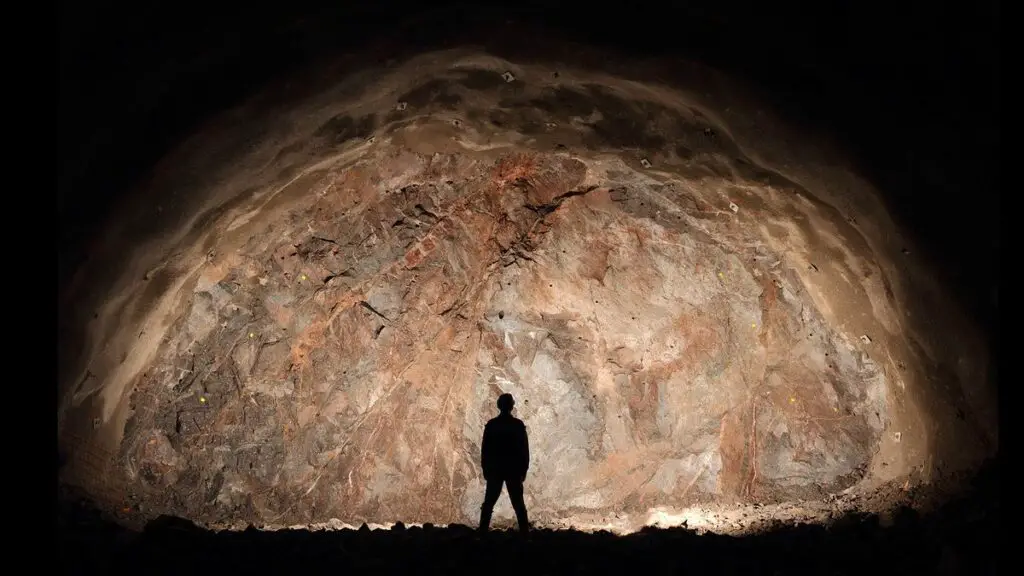Earth’s Layers: An Unseen World
The Earth is a marvel to behold, with its many hidden layers lying deep beneath the surface. But what if we could drill through the center of the planet to reach the other side? What extreme forces and temperatures would we encounter deep within the Earth? While drilling through the Earth remains a work of science fiction, scientists have some ideas about what might occur based on experience from other drilling projects.
A Gargantuan Undertaking
The Earth’s diameter is an astounding 7,926 miles (12,756 kilometers), making the idea of drilling all the way through the planet a monumental task that would require a gargantuan drill and decades of relentless work. The first layer to drill through is the crust, about 60 miles (100 km) thick, according to the U.S. Geological Survey. As the drill travels farther underground, the atmospheric pressure would increase significantly.
Dr. Doug Wilson, a research geophysicist at the University of California, Santa Barbara, explained that for every 10 feet (3 meters) of rock, there is a equivalent of about 1 atmospheric pressure, with the pressure at sea level. He emphasized that this pressure adds up rapidly, particularly when drilling through a vast number of kilometers.
The Deepest Drill
The Kola Superdeep Borehole in Russia holds the record for the deepest human-made hole, extending 7.6 miles (12.2 km) into the Earth. At its bottom, the pressure is a staggering 4,000 times that at sea level. Achieving this depth took scientists nearly 20 years, yet it barely scratches the surface of the next layer, the mantle, a 1,740-mile-thick (2,800 km) layer of dark, dense rock that drives plate tectonics.
The project to drill through Earth requires a careful approach, as the hole made in the quest would collapse unless drilling fluid is continuously pumped into it. This drilling fluid, a mix of mud including heavy minerals like barium, balances the pressure inside the hole with the surrounding rock and prevents it from collapsing, according to Wilson.
The Fire Below
The journey through the Earth’s layers would be fraught with challenges as the drill advances deeper. For instance, the temperature in the mantle is a searing 2,570 degrees Fahrenheit (1,410 degrees Celsius), necessitating the use of a specialized, expensive alloy, like titanium, to withstand the intense heat and pressure.
Should the drill successfully traverse the mantle, it would finally reach Earth’s core at about 1,800 miles (2,896 km) down. The outer core, predominantly composed of liquid iron and nickel, is extremely hot, with temperatures ranging from 7,200 to 9,000 F (4,000 to 5,000 C). Drilling through this hot, molten iron-nickel alloy would pose significant challenges and would likely require cold water to be pumped down to prevent the drill from melting.
Then, after 3,000 miles (5,000 km), the drill would reach the inner core, where the pressure is so intense that, despite the scorching temperatures, the nickel and iron core remain solid. “You’d really be at indescribable pressures,” said Damon Teagle, a professor of geochemistry at the University of Southampton in the U.K., noting that the challenges continue even at the core. The pull of Earth’s gravity would change directions, effectively requiring the drill to work against gravity as it pushes “up” toward the surface, back through the outer core, mantle, and crust to reverse the downward journey.
The Inscrutable Depths
The journey to drill through the Earth to reach the other side presents numerous obstacles and challenges. Overcoming the extreme pressure, temperature, and gravitational forces, as well as the rigors of drilling through layers of rock and molten metal, would require unprecedented technology and innovation. While drilling through the Earth from one side to the other remains a distant dream, the incredible journey provides a glimpse into the enigmatic secrets hidden beneath the planet’s surface.


